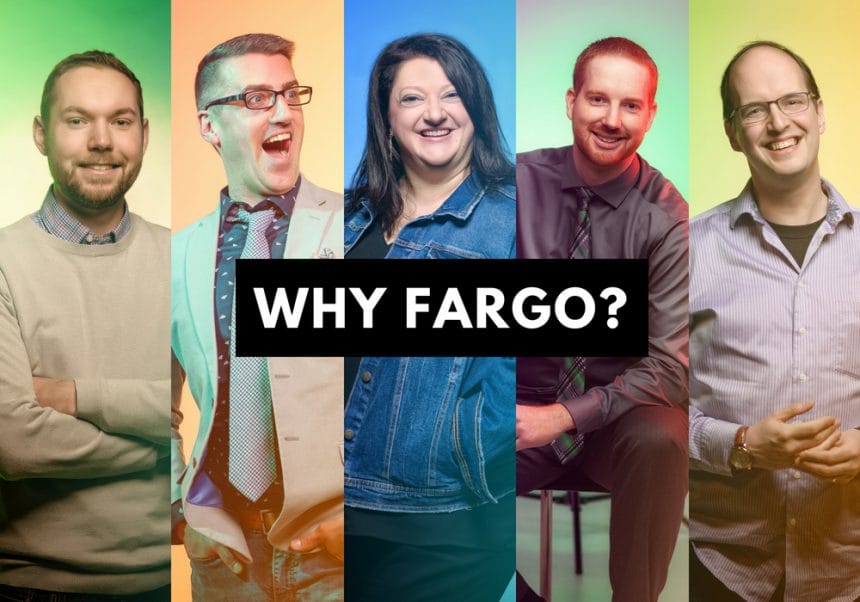Photos by J. Alan Paul and courtesy of Peter Schott, Sara Stolt, Patrick Kirby and David Dvorak
Thirteen up-and-coming Fargo businesses give us a look at what they’re doing and tell us why they chose to start their companies here.
Check out part one below with WalkSmart’s Peter Chamberlain, Genesis Feed Technologies’ Peter Schott, The Project Co.’s Sara Stolt, Do Good Better Consulting’s Patrick Kirby and Field of View’s David Dvorak.
Peter Chamberlain: Risk-taking. Community. Desire.
WalkSmart Founder and President
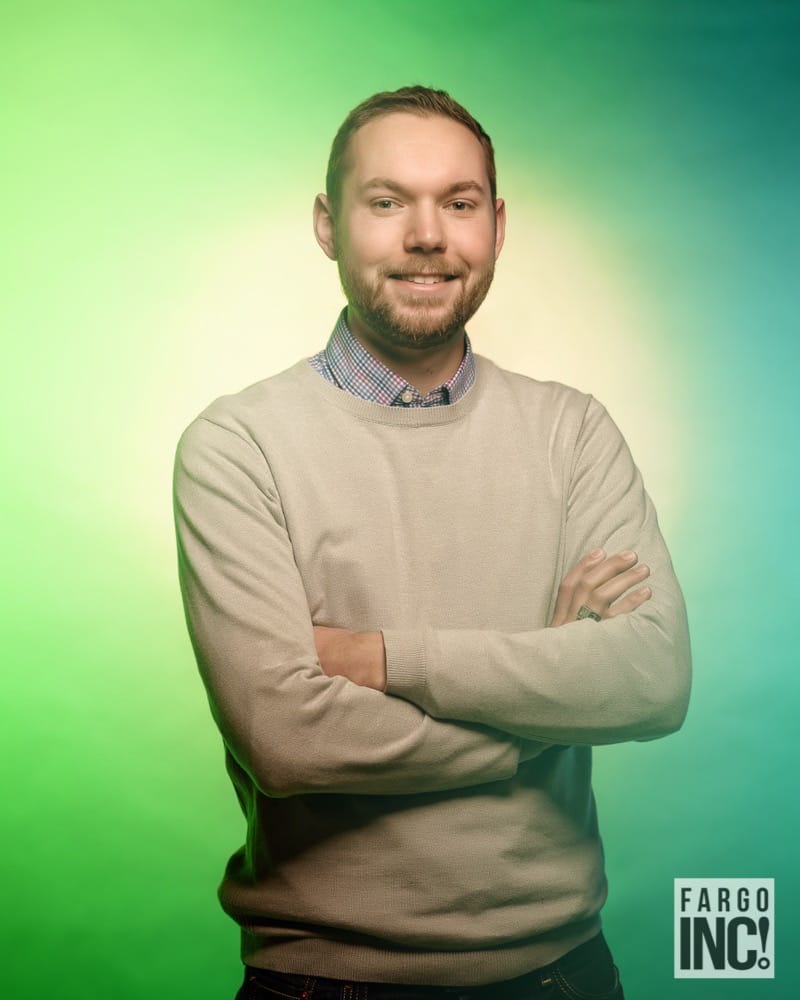
“Fargo wants to have a vibrant startup ecosystem. That means taking financial and professional risks as an investor, customer, or employee and investing in the community-building efforts of Emerging Prairie and other organizations — all because there is a desire to see Fargo become one of the best places to start a company. People here take a lot of pride in their community, and I am excited to be a part of a community that takes pride in its entrepreneurs.”
Meet Peter Chamberlain
- Relocating company from Grand Forks to Fargo in June
- Originally from Oregon, has mechanical engineering degrees from the University of Portland (Oregon) and the Massachusetts Institute of Technology (MIT)
- At MIT, began designing medical devices as a part of class projects and worked at a medical device manufacturer
- Says one experience in particular gave him the confidence to “start something from nothing”: He and a group of friends founded the MIT Hyperloop Team, which was the first to demonstrate the key technologies of the Hyperloop, both in design and in the world’s first Hyperloop test run.”A conversation among friends, hours of hard work, and a tweet from Elon Musk was really all it took,” Chamberlain says.
Company Overview
WalkSmart helps older adults maintain their independence and stay safe in their homes, which , in turn, hopefully improves quality of life and reduces healthcare spending. They invented the world’s first “smart” walker attachment, which allows for fitness tracking, health monitoring and safety alerts. By providing incentives to use the walker and sending alerts when the walker is not used, they hope to cut into the $50 billion spent annually across the U.S. on fall-related costs.
Chamberlain says WalkSmart will allow physical therapists access to better outcomes, senior living facilities will improve their revenue, and families will have better peace of mind through the company’s mobile app offerings and automated alert system.

The Potential
Chamberlain says his personal experiences with his grandparents — three of whom were walker users — first sparked his idea to create a smarter brand of walker.
“My family dealt with issues around falls, rehabilitation, infections, dementia and quality of life,” Chamberlain says. “I talked with healthcare professionals, as well as my grandparents, to discuss initial reactions to my idea, and then I started building because I knew I would have to develop some of the key technical competencies in order to make this a reality.”
While developing the product, Chamberlain applied to a number of programs and competitions that he says forced him to evaluate how his product might fit within the market. After a few iterations of researching and writing down a plan, he says he knew there was at least a chance his idea could work, “which is all you can ask for with startups,” and after graduating from MIT, he moved to North Dakota to begin working on the company full-time.
The Competition
WalkSmart is at the intersections of a few markets, including fitness tracking and home monitoring, Chamberlain says.
“For fitness tracking, FitBit and Garmin have done a good job of creating products for younger, tech-savvy individuals,” he says, “but as you might guess, wearables face extreme difficulties with adherence in the senior market. Also, your wrist doesn’t move when you use a walker. Fall prevention is accomplished partially by increasing walker use, and existing products simply are not designed for this purpose.”

There are a number of competitors in the home-monitoring space, and Chamberlain says that while their solutions are valuable, they’re expensive, face fundamental technological limitations and ultimately do little to prevent falls.
“Our technology can interface with these solutions to provide a more comprehensive monitoring solution,” he says.
The Progress
After a number of product iterations, WalkSmart, which is available for puchase on both the company’s website and Amazon, is now officially in a limited market release. They have paying customers in all three key market segments — healthcare, senior living and consumer — as well as a few ongoing pilot programs that have continued to provide data about the effectiveness of the system.
Now, Chamberlain says he and his team are turning their attention to marketing and sales.
“We have to demonstrate that we can reach economic decision-makers in our markets, provide sufficient education and ultimately convert into a sale,” he says.
“It makes all the challenges worth it when you consider the people we have helped thus far. One assisted living resident has been falling less at night because we’re able to alert the staff when she needs help. One resident’s son has become extremely engaged with checking the app to make sure his mom is getting enough exercise. Personally, I was able to automatically detect my grandma’s urinary tract infection days before it was diagnosed.”
The BHAG (Big Hairy Audacious Goal)
Chamberlain says he’d like to see WalkSmart used universally in senior living facilities and long-term care facilities across the country.
“We think this goal is entirely possible,” he says. “Facilities used to charge extra for people to have the emergency response pendants — LifeAlert, LifeLife, etc., but the value became so evident over time for both the facilities and the families that it is now a standard piece of equipment for every room. We’re confident that WalkSmart can be thought of in much the same way.”
Real Talk
Chamberlain: “As a 26-year-old who has never had a ‘real’ job, I often feel inadequate compared to other people in the business and tech community, especially when things are not going my way. Entrepreneurship is a crazy emotional roller coaster. I have weeks where I am on top of the world and those where I feel like closing up shop. In those down times, it’s important to have the support of your family, friends and the community.
“A specific challenge of mine has been fundraising, even if it’s not a unique one. Moving to a new state and asking people for money is tough. Once I got to know other entrepreneurs in the region, though, they helped me with connections and got me in front of the right people.”
Peter Schott: Community. Creativity. Cooperation.
Genesis Feed Technologies Cofounder

“When I was looking at places to start my company, I was comparing Fargo to Austin, Texas. Fargo was a clear winner for many reasons … If you want to start a business, everything is here for you to do so right here. I was blown away by the artistic community in the area. So many artists, musicians, and foodies all in the same space working together is energizing and inspiring. I believe this creativity is a huge part of the fuel that drives other innovation and business success.”
Meet Peter Schott
- After a couple stints in the corporate world, about a decade ago, Schott went back home to Kulm, North Dakota, to help run the family seed business.
- After leaving the business, while planning a trip to Texas to meet with a few groups for a consulting business he was dreaming up, Schott saw and applied for a job at Fargo-based mobile development company Myriad Mobile — a position he said matched word for word with what he wanted to do in his own business.
- Schott says working at Myriad got him to “take a fresh look at Fargo,” where he saw a vibrant downtown with thriving technology businesses, art, restaurants and energy that wasn’t there when he attended Concordia College in the late ’90s.
- While at Myriad, Schott connected with a Malaysia-based colleague, who floated Schott a few mobile ideas he had for the animal feed industry. Schott had a vision for a better mobile platform that could be distributed globally, and soon after, the two were partners.
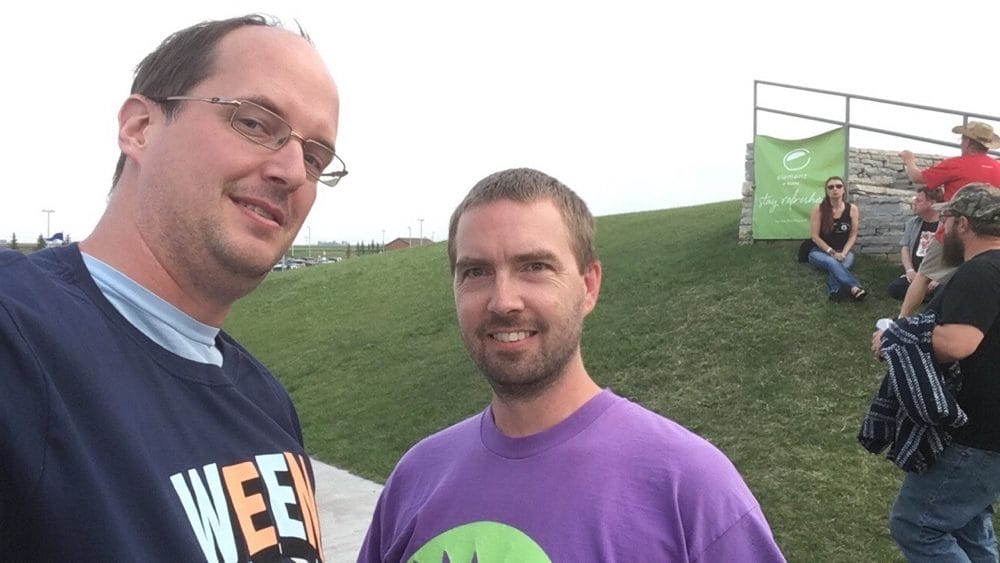
Company Overview
Genesis Feed Technologies helps bring visibility to animal feed costs by giving customers real-time access to the right information.
“Ingredient purchases, additives, and supplier choices are crucial elements to feed efficiency and profitability, but decisions are often made without involving the right people and proper information,” Schott says. “Genesis brings feed operations experience together with modern mobile technology.”
The Potential
In the feed manufacturing supply chain, there are a number of disparate systems used for resource planning, purchasing, formulation and manufacturing.
Genesis Feed Technologies’ system sits on top of these systems to share information between groups and people. A finished animal feed will often touch several manufacturing groups and many people along the way, from producer to nutrition consultant to feed formulation group. There is a great deal of communication that happens along the way over email, text and files being sent and received.
“It’s difficult, if not impossible, to trace back why a formula was approved or rejected or to track where it’s at along this chain,” Schott says.
The Competition
As Schott explains it, there are a number of existing systems that work individually — with some exchanges between them — but the mechanics to share the data, especially between different businesses, don’t work well.
“There are more than 30,000 feed mills globally,” Schott says, “so there’s plenty of opportunity for our system to tie into existing platforms and work with industry partners.”
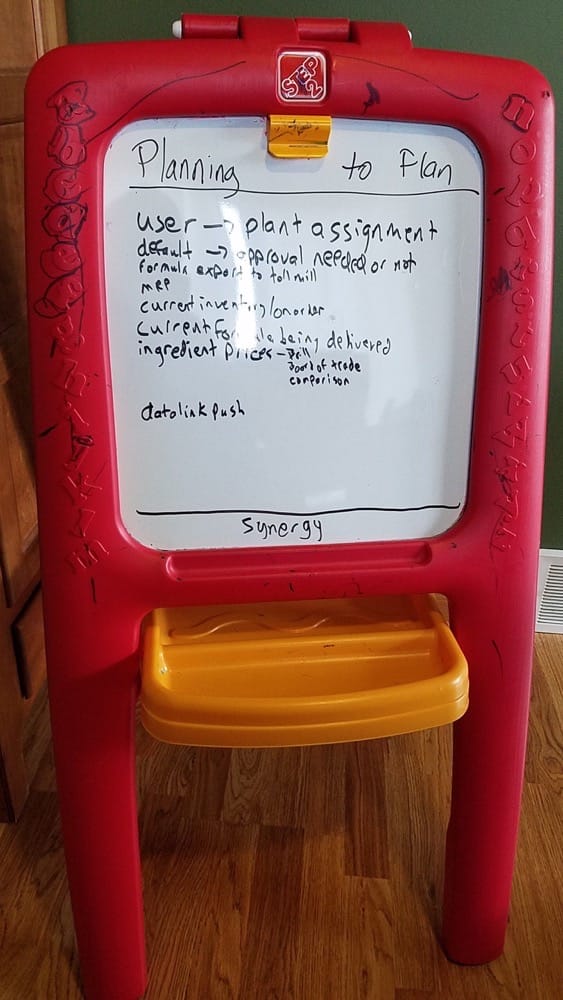
The Progress
Genesis has just moved from the pre-revenue stage into early seed stage (AKA post-revenue).
“At this point, we are happy with our growth, customer acquisition and size of the company,” Schott says. “We have money in our bank account, and several customers have given us money and are happy.”
The BHAG (Big Hairy Audacious Goal)
It’s entirely possible that their platform could become the communication hub for systems in the feed industry globally, according to Schott, adding that he’d like for it to become the industry standard.
Real Talk
Schott: “When I put myself out there to try something new, that voice in my head was my own worst critic – telling me I would fail, that people wouldn’t like the idea, that I’d let my friends and cofounders down. Daily meditation and being in a group of like-minded entrepreneurs has helped me stay afloat mentally and emotionally.
“With two of us in Fargo and another cofounder in Malaysia, this leads to communication issues both in availability and understanding. Compound that with associates in other countries, and communication becomes more critical. We’ve found that regular check-ins with video have been helpful, as well as mixing personal with business. Each of us brings our own lives to the table, and it impacts what we do.”
Sara Stolt: Relationships. Support. Resources.
The Project Co. Founder
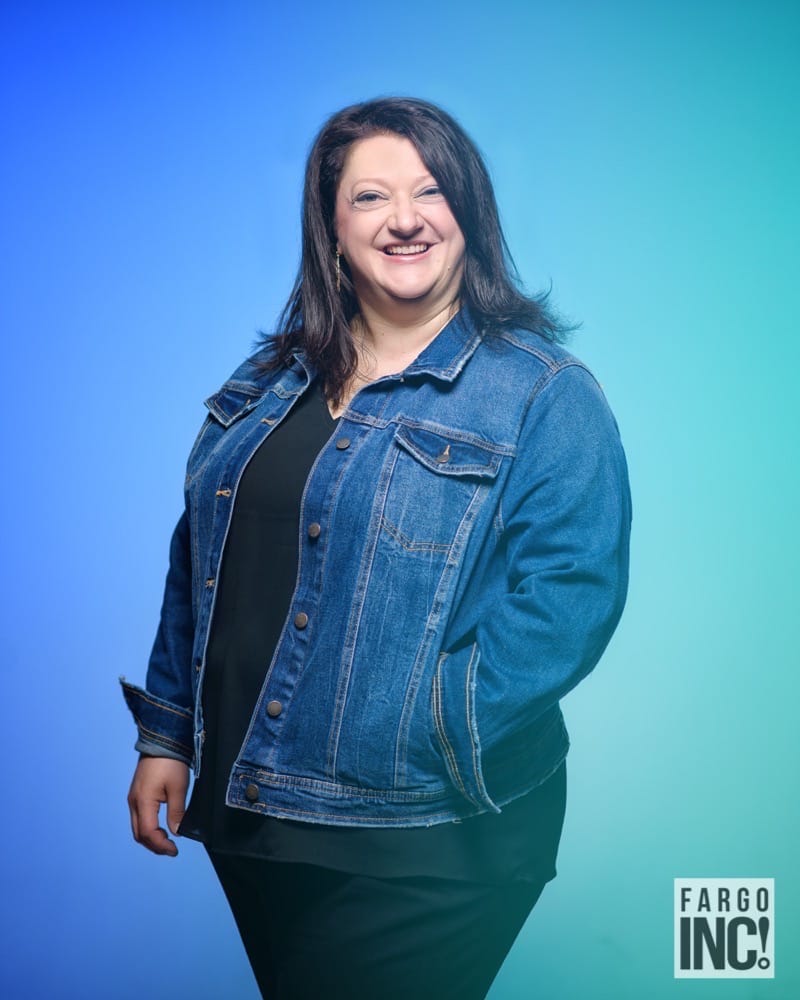
“There is no way I could go anywhere else and be successful with The Project Co. because those relationships don’t exist anywhere but this community. This region is rich with resources for entrepreneurs and economically stable, meaning that companies have the resources to invest in agile talent such as The Project Co.”44
Meet Sara Stolt
- Before founding The Project Co., previously worked at United Way of Cass-Clay, Blue Cross Blue Shield of North Dakota and Dakota Medical Foundation
- Despite working on projects from the beginning of her career, says it didn’t click for her that she was wired to be a project manager until a mentor, Michelle Kommer, pointed out that she had a way of developing and understanding strategy and then breaking it down into the work that needed to get done to accomplish it
- Says she’s passionate about the amount of money that gets wasted on company culture, with little to no movement on the employee-engagement continuum
Company Overview
The Project Co. helps businesses identify and complete their most important projects.
Currently a one-woman-band, Stolt focuses on traditional projects such as implementing new business models, identifying business opportunities and facilitating various changes at companies. She also helps with business-services projects such as website builds, systems and technology, and new-process development.
“Being a good project manager means you also identify what isn’t working well,” says Stolt, who, in April, celebrated one year in business.
The Potential
When she started looking at who was doing this kind of work locally, Stolt says there was no one combining facilitation, project management and process improvement into one service.
Additionally, with the average project manager salary at just more than $90,000 a year, it can be cost-prohibitive for many organizations to employ their own full-time project manager. Enter The Project Co.
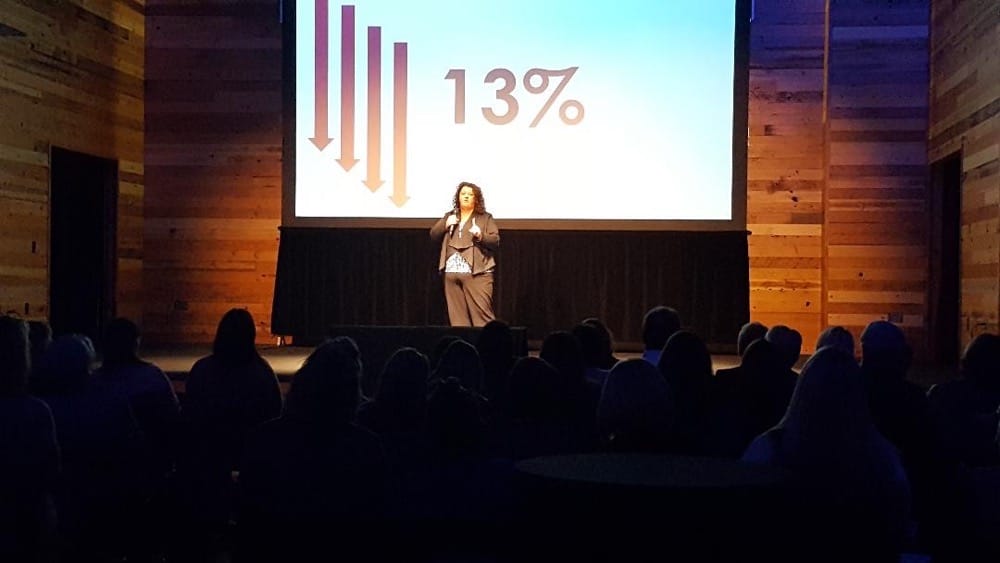 Stolt presenting at a DisruptHR conference last fall
Stolt presenting at a DisruptHR conference last fall
“I believed I could position myself as the agile talent that organizations needed short-term to get big work done,” says Stolt, whose plans for The Project Co. were initially a little more niche. “When I launched, I intended to have a very narrow focus and just work with nonprofits. Unlike corporations, nonprofits don’t have the resources to have full-time project managers or process-improvement specialists. Through participation in CO.STARTERS, though, I was able to better identify my audience and expanded (The Project Co.) to include small- to mid-size businesses and later state government.”
The Competition
While there are other local project management firms, Stolt says they operate in a different space.
“I really look at business and internal operations as my specialty,” she says.
While the field of project management is still relatively new by title, the concept of project management has existed for decades, which Stolt says is most evident
in the software development and technology arenas.
“Project managers are the most creative pros in the world; we have to figure out everything that could go wrong, before it does.” -Fredrick Haren
“In larger metros, you see project management firms that focus just on just the software-development lifecycle or just on event planning,” says Stolt, who adds that Project Management Professional, or PMP, is actually an internationally recognized designation — similar to Certified Financial Planners. “It’s very common in these metro areas to have significant competition when it comes to project management.”
The Progress
Surpassing her income goal for 2017 — a true rarity in the world of entrepreneurship — Stolt worked with nearly 15 local business, nonprofits and government agencies during her first year in business.
“The highlight was engaging with the State of North Dakota’s Department of Human Services as the project manager and facilitator for the implementation of Senate Bill 2206,” Stolt says, “which is focused on the redesign of social services across the state.”
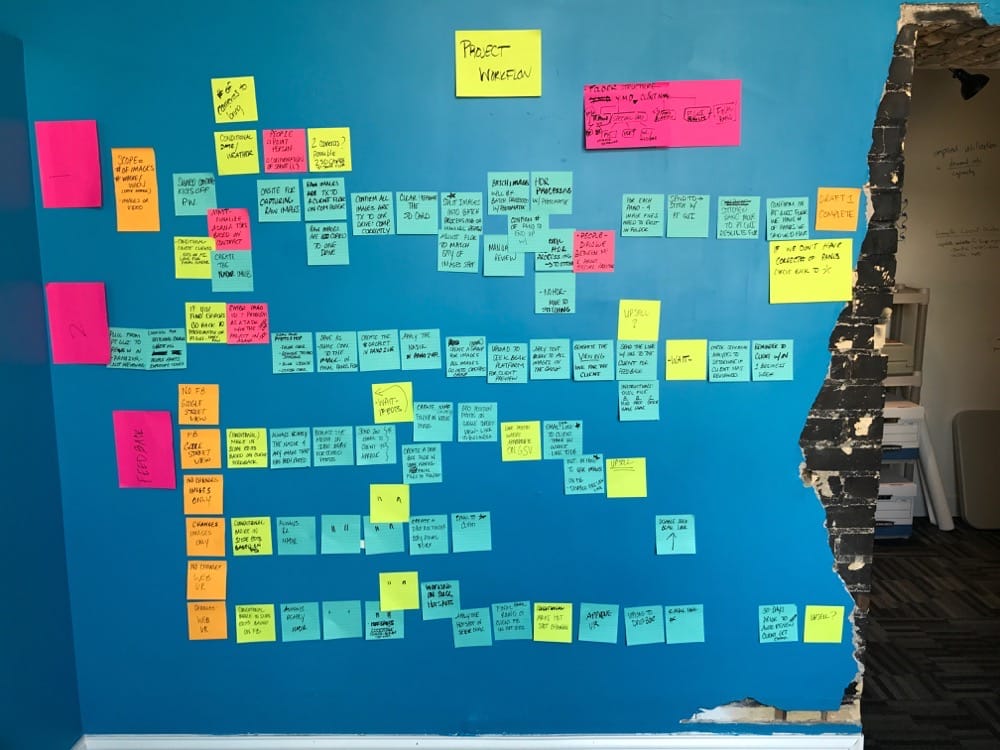 A sample project workflow
A sample project workflow
That led to her getting two other state projects, including the Innovate Recovery Competition through the North Dakota Office of Recovery Reinvented, the passion project of North Dakota First Lady Kathryn Helgaas Burgum.
The BHAG (Big Hairy Audacious Goal)
While she concedes it’s not as audacious as sending a man to the moon or building a self-driving car, Stolt says she’d really like to start an incubator for projects.
“If you’re a business with a big idea, you’d bring it to our project incubator, where we’d have subject-matter experts to help you implement the idea,” explains Stolt, who says her short-term goal is to add a few team members to The Project Co. and expand her team beyond herself. “They may not all be Project Co. team members, but other entrepreneurs who have expertise in marketing, sales, finance, etc.. would help you launch your big idea. The Project Co. — composed of a technical project manager, a business analyst and an event project manager, for example — would manage things for you, and you’d get resources to help make it successful.”
Real Talk
Stolt: “Being a solopreneur can be lonely. You no longer have a team to vet ideas through and ask questions. The solution? Be intentional about building your tribe. I’ve found great ‘team members’ in other solopreneurs, who are either just starting out or have a few years under them and can offer advice. I make it a practice to schedule time with these individuals weekly. Some of my greatest friendships have grown out of seeking out other entrepreneurs.
“When you start a business, you wear virtually every hat. I’m responsible for marketing, business development, project management and accounting. The first six months, I really struggled to do any of these really well. I got smart and hired someone to help with my accounting, met with Kirsten Jensen of Next Action Digital to help me with marketing via social media, and tapped Max Kringen at Tellwell for some sage advice. I also started automating more tasks and accounting work.
“In the excitement of starting a new business, I said yes to everything. In theory, this is a good idea, but in practice, it is terrible. I wanted to build my business really quickly and took on too much at once. I suffered; my clients suffered; and my family suffered because I was working all the time. I’ve had to really identify what is a good workload for me to maintain, and now, I evaluate each project, the timeline and the deliverables to see if it fits. Don’t get me wrong: There’s a certain level of hustle I’m always doing, but I need balance.”
Patrick Kirby: Enthusiastic. Audacious. Impact.
Do Good Better Consulting Founder

“Go ahead and tell someone in Fargo they can’t do something; that’ll work well for you. I think the audacious attitude of ‘there’s nothing we can’t do’ breeds community, bridges different cultures and fosters an environment where it feels like anything is possible. Do you have an audacious goal to help make a significant impact in this community and can endorse that case enthusiastically? Congratulations, you just found the perfect place to live!”
Meet Patrick Kirby
- When closing campaign accounts after a failed bid running for the Minnesota House as a 25-year-old, realized he’d raised way more money than he was legally allowed to spend in the election. Says it was the first time he realized he had a knack for fundraising
- After a short stint as a manufacturing sales rep, found his way to the nonprofit world with the Cystic Fibrosis Foundation, where he helped the organization raise millions of dollars
- “Fell in love with a girl from Fargo (and the city)” and was eventually recruited to become chief development officer at the Anne Carlsen Carter
- Before launching Do Good Better, spent nearly two years sketching a business plan and leaning on colleagues in the philanthropy world to “punch holes” in ideas on how to create a fundraising consulting company
Company Overview
Do Good Better is a consulting firm dedicated to helping nonprofits raise more money and make fundraising a lot simpler, and, as Kirby puts it, “a heck of a lot more fun.”
The problem, as Kirby sees it, is that most nonprofits are being taught a 30,000-foot view of what fundraising could be, all while trying to put out fires from donors, volunteers and staff. What he believes is missing is a translation of fundraising philosophies to a more simple: How can I do these things at my organization? — regardless of size, scope or scale.
The Potential
As someone who had worked in nearly every facet of the industry during his 13 years as a fundraising professional, Kirby says he knew what was missing from the market.
“Someone who could translate complicated theories and help implement them if you were a one-, two- or three-person shop,” he says. “I saw numerous nonprofits getting overcomplicated and spending hours in meetings for the sake of having meetings and avoiding the hard work of actual fundraising. I knew from experience how to fix that.”
Because there are more than 1,500 nonprofits and fundraising entities in the region and the average tenure of a development director is less than 18 months, the amount of new folks needing training, perspective, and advice is seemingly endless, according to Kirby.
 Kirby and attendees of a training event called “Notes of Appreciation: Saying Thank You in a Digital World”
Kirby and attendees of a training event called “Notes of Appreciation: Saying Thank You in a Digital World”
“I’m on a mission to reduce burnout of fundraisers and to lengthen the amount of time they stay at an organization,” he explains. “The pressure of someone who feels like they have the weight of the organization’s financial success on their shoulders is a big reason for that burnout.”
The Competition
While there are a handful of regional consulting groups that help with capital funding and church and university campaigns, Kirby seems to have found a niche helping small- to medium-sized organizations build capacity and curate fundraising events.
“Turns out most people think nonprofits are poor, stingy and not progressive enough to risk (hiring) consultants,” he says. “Not true. In fact, I would counter that nonprofit organizations are the most innovative, strategic and forward-thinking groups in this town.
“Groups and individuals who see government as reactionary rather than visionary are forced to come up with solutions to problems we have in this city and state. And all they need is money to empower and deploy their unique and awesome missions.”
The Progress
In just seven months in business, Kirby has topped 20 total nonprofits and fundraising clients, 18 of the 20 being referrals. On Giving Hearts Day 2018 alone, the dozen clients he works most closely with won more than 20 awards and grossed more than $800,000, an increase of 25 percent from the year before.
He’s also hosted seven local and regional fundraising trainings with more than 100 individual leaders.
The BHAG (Big Hairy Audacious Goal)
The long game for Kirby is to start a venture philanthropy group right here in Fargo.
“It’s my white whale,” he says. “Wouldn’t it be amazing to help inject capital and funding into startup nonprofits? Wouldn’t it be incredible to help make maximum impact to a societal ill?
 Kirby leading a “How Not to Suck at Planning Fundraising Events” training
Kirby leading a “How Not to Suck at Planning Fundraising Events” training
“Think about it: Businesspeople dump countless dollars into technology, gadgets and apps on the long shot that, 5-10 years from now, they may see a profit. Imagine if we could create an avenue for those same individuals who have high-capacity wealth to finance organizations and programs that address the root cause of local issues, and their return on investment is social good. Not $500 or $1,000 grants, I’m talking $250,00 – $500,000 injections of cash to make great things happen. Locally run. Locally controlled. Locally amazing.”
Real Talk
Kirby: “As long as I’ve been self-aware, I’ve been a leap-before-you-look-and-deal-with-the-fallout-afterward kind of guy. I’ve had to relearn, from a business perspective, to slow down. And it’s hard to do when you’re so excited about the potential to grow, expand and help as many organizations as possible.
“I had a couch, two rugs and office decor galore sitting in my garage for two months before I had an official contract for work. If you think it’s embarrassing and expensive to sign and then, within 72 hours, immediately and desperately try to get out of an office lease you weren’t actually ready to pull the trigger on, you’d be right. A tough and expensive lesson learned was that baby steps in business is okay.”
David Dvorak: Support. Ecosystem. Community.
Field of View CEO

“Through North Dakota’s emphasis on and investment in drones, they captured the attention and imagination of myself and the other engineering students that originally started Field of View, which has become a North Dakota business that hires employees, sells to and purchases from local companies, and collects and pays taxes. North Dakota is always talking about how to get young people to stay here and diversify our economy. I am proud to be one example of how they’ve accomplished that goal.”
Meet David Dvorak
- In high school, got into remote-controlled airplanes and says his dream job was to one day work for an experimental aircraft company
- During sophomore year at University of North Dakota, got a job with an unmanned aircraft student research group and ended up doing the mechanical layout of a payload designed to map farm fields and spot stressed plants
- After project was complete, says he didn’t want all his hard work to go to waste, so he kept working on the payload and learning more about precision agriculture
- Around the same time, attended the 2007 UAS Summit in Grand Forks and says he saw an opportunity to use something he enjoyed and was already passionate about to help farmers, help the environment, and make money doing it
Company Overview
Field of View is a drone technology company that moved its headquarters from Grand Forks to Fargo in August of last year. Since its founding in 2010, Field of View has shifted its focus from being an agricultural drone-flight service provider to selling and reselling electronics and software.
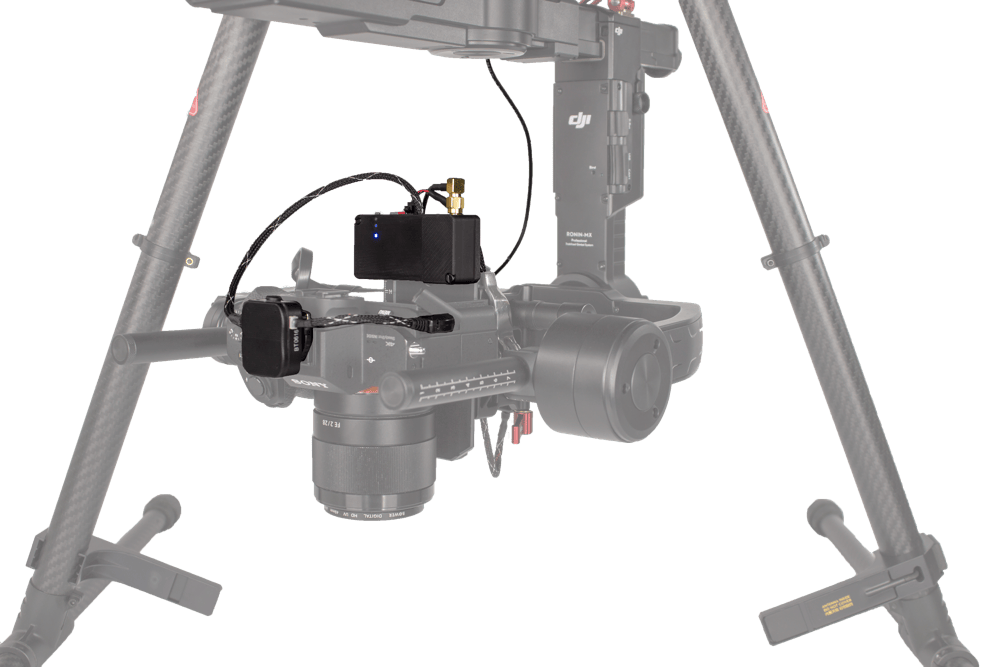 GeoSnap Express on a DJI M600 drone
GeoSnap Express on a DJI M600 drone
They’re the makers of the GeoSnap system, a specialized camera add-on that enables drone operators to use professional DSLR-style cameras for aerial mapping. The GeoSnap systems autonomously trigger the cameras during flight and precisely geo-tag the high-resolution images using the system’s built-in GPS receiver.
The Potential
At the time the company was founded, Dvorak says there was really only one commercial-grade autopilot and one affordable crop-stress-sensing camera that could be used on a small unmanned aircraft.
“And they didn’t work well together,” he says. “Originally intended for our own use, we designed a circuit board that solved the problem of interfacing the two devices in a valuable manner. From there, we realized we weren’t the only ones with this problem, and maybe there was an opportunity to sell it.”
 Dvorak with Field of View COO Kaci Lemler
Dvorak with Field of View COO Kaci Lemler
That was the beginning of what is now their GeoSnap product line.
The Competition
That they’re aware of, there’s only one other company that makes a camera/drone add-on that does both triggering and geotagging.
“Ultimately, the larger space of drone mapping solutions is huge and getting more crowded every day, though,” Dvorak says.
The Progress
- 200+ unique customers
- 10+ countries serviced
- 7,000+ cups of coffee consumed
The BHAG (Big Hairy Audacious Goal)
Dvorak says their end game is to create a fully autonomous workflow for creating accurate, centimeter-level 2D maps and 3D models using drones and high-resolution cameras.
“The drone industry has come a long way, but there are still a surprising number of manual steps required to produce ultra-high-quality data products,” he explains. “We are currently building the critical pieces of the puzzle to eliminate these cumbersome and time-consuming manual processes.”
Real Talk
Dvorak: “Our biggest challenge has been figuring out how to grow, enlist help and create partnerships in constructive ways. It’s clear to me that people and companies that try to do it all themselves just don’t go anywhere, but enlisting help and partnerships also has to be approached the correct way in order to be valuable.
“Our problem we are facing right now is finding a good place to establish a flight-test range to test our next-generation product, which performs survey-grade geotagging. If anyone has leads on a large (1-5 acre) parking lot of similar site near town that we can use to set up a semi-permanent test range – paint aerial panels on the concrete, survey them in and then regularly fly over them with our geotagging device to test the accuracy – let us know.”
